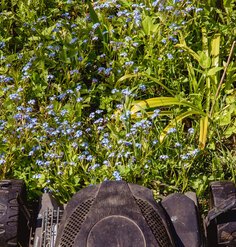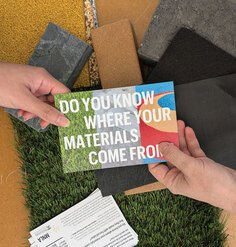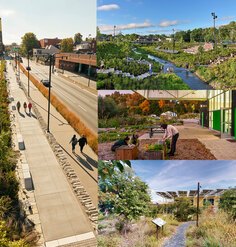From the Field: Investigating a Range of Landscape Projects and Benefits
By John Whalen, MLA Candidate, and Jinki Kim, Ph.D., Assistant Professor, Department of Landscape Architecture, University of Illinois at Urbana-Champaign
Participating in this summer’s Case Study Investigation (CSI) program has been an exciting opportunity to learn more about landscape performance by developing and applying various methodologies to analyze the performance of our sites. Our team is working at three locations that vary substantially in size and project type, thus creating very interesting and distinct research questions regarding social, environmental and economic benefits.
Hitchcock Design Group’s Boneyard Creek Restoration: Scott Park and the Second Street Detention Basin
Located in Champaign, Illinois, the Boneyard Creek is an important waterway running through a densely populated residential area and near major commercial arterials. The Second Street Detention Basin was designed as part of a larger revitalization plan to solve frequent flooding problems and create open space along the creek edge that would form attractive green areas for residents and support local business. Recognizing the project’s potential to act as an engine for economic development, our research team looked at recent development and redevelopment in the immediate neighborhood. Identifying key players, including the City of Champaign and local real estate and apartment firms, was key in measuring the anticipated growth of the area.
de la fleur’s One Drop at a Time
A private residence with rain gardens, bioswales, rain barrels, a green roof, and lots of prairie grasses, all in the middle of a traditional suburban neighborhood, is sure to raise a few eyebrows. But the residents of One Drop at a Time are proud of their home, which effectively utilizes green infrastructure to capture rainwater and treat stormwater runoff before it enters the municipal sewer system. What do the neighbors think? For this site surrounded by very traditional yards, the educational benefits were a compelling performance aspect to assess. Our research team developed a survey to inquire about local attitudes regarding the aesthetics of the property, knowledge of its functionality, and whether living near such a project has inspired any changes in nearby yard maintenance.
Living Habitats’ Chicago Botanic Garden Lake Shoreline Enhancement Projects
The largest of the three projects in terms of sheer physical size is set on a series of islands within the Chicago Botanic Garden’s 60 acres of lakes. Utilizing innovative bioengineering techniques, three-quarters of the shorelines have been reconstructed and restored as native habitats that aim to fight erosion, remediate water, and provide habitat for local wildlife. The new shorelines appear radically different than the previous turf shorelines that were eroding into the lakes. Because of this drastic change in physical appearance, our research team pursued the opportunity to measure the educational benefits of the new design. We developed a survey to measure garden visitors’ preferences related to the aesthetics of the new and old shorelines. The survey also asks visitors to rate the ecological function of each shoreline style to determine if the project is changing attitudes and knowledge about sustainable and native plantings.
Overall, working on these three very different project sites has been a special and very educational opportunity for our team. In particular, the collaboration between our educational institution and the field professionals who are designing and implementing these fascinating projects has been a wonderful experience and has provided encouraging insight into the world of landscape performance.
Research Fellow Jinki Kim and student Research Assistant John Whalen are participating in LAF’s 2013 Case Study Investigation (CSI) program and working with the designers and clients to document the performance of three distinct landscape projects in Illinois. Any opinions expressed in this article belong solely to the author. Their inclusion in this article does not reflect endorsement by LAF.











